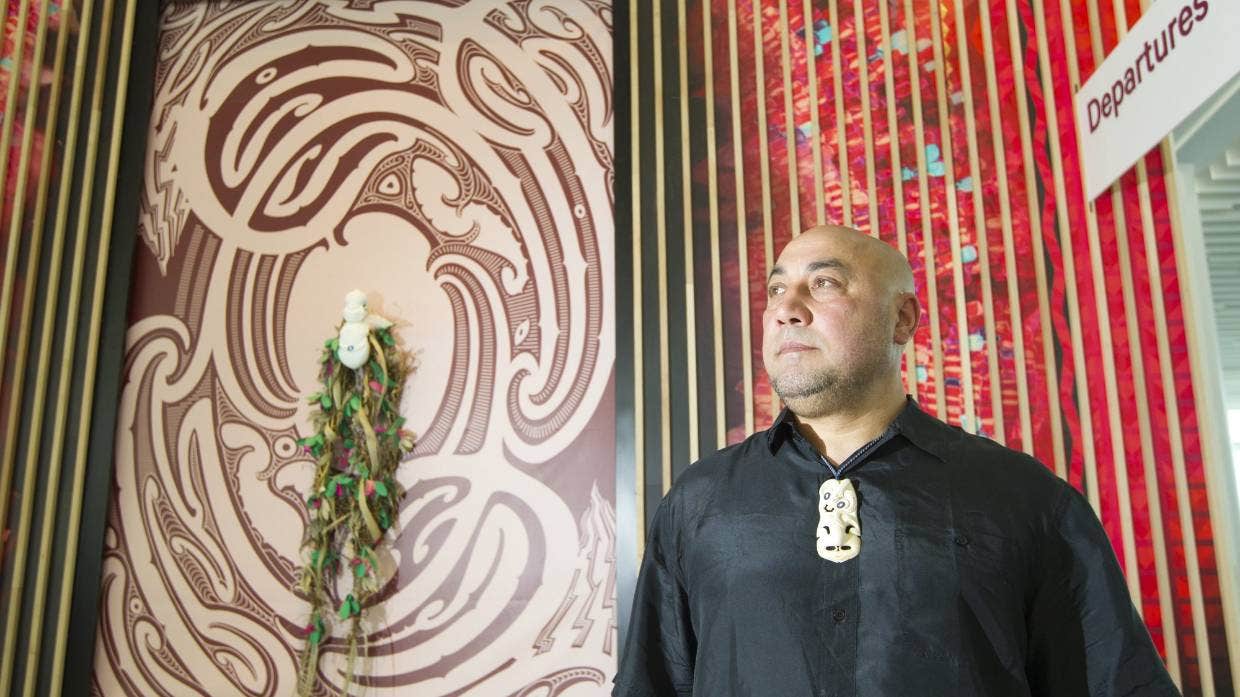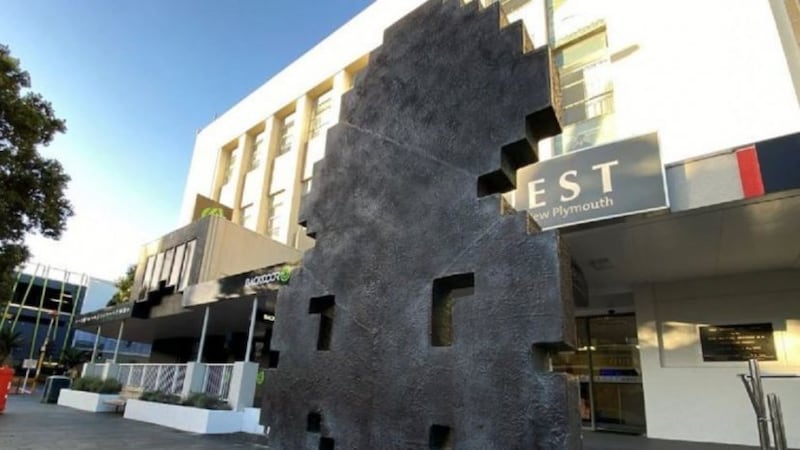Changed rules may see more sculptures in New Plymouth like 'Tichi.' a pixilated tiki by artist Kereama Taepa (Te Arawa, Te Āti Awa). Photo / Craig Ashworth
By Craig Ashworth, Local Democracy Reporter
Councillors are pushing for more Māori art in New Plymouth’s public places, despite a warning that they may be treading on artistic freedom.
New Plymouth District Council’s Art in Public Places Strategy has been changed to include “an increased commitment to the inclusion of local Māori narratives and artists.”
The strategy – and the Art in Public Places Trust which buys the art – were created to ensure independence from political processes.
But councillors have also instructed council officers to discuss with the Trust how iwi and hapū could get a say on its board.
Councillor Bryan Vickery warned that an “overreach” could rob the Trust of the independence it was set up to achieve.
“I have a bit of philosophical disquiet that this is art and I’m wondering if we’ve gone too far.”
“I’m just a little bit worried that maybe it’s become too inclusive, for the very best of reasons.”
Vickery voted against the change in favour of “artistic desire to have freedom and to be brave enough to court with controversy.”
Murray Chong also voted against the changes but didn’t speak about his reasons.
Support from the rest of the councillors saw the measure pass 13-2.
The changes were put forward by NPDC’s iwi committee Te Huinga Taumatua, whose co-chair Gordon Brown said the Trust would gain, not lose.
“When it was being introduced by the officers [they] said that art in public places should reflect who we are: well it doesn’t at moment.”
“There’s nothing at all that is prescriptive in what [the Trust has] to choose, it’s just let’s have all of our art in public places.”
Dinnie Moeahu said throughout his life there hadn’t been a public visual connection to place for many tangata whenua, but that had changed with Rangi Kipa’s award-winning design of New Plymouth Airport.

Puketapu hapū member and cultural design lead Rangi Kipa at New Plymouth’s new airport terminal. Glenn Jeffrey / Stuff
“We look at the artistry and the cultural narratives that’s presented to us – that represents us, but the wider community as well.”
“It’s not only healing but it’s mana-enhancing to the wider community.”
Mayor Neil Holdom said local mayors had recently discussed opportunities to rewrite the previously partial history of Taranaki.
“There is a documented history that doesn’t reflect the history that was experienced here. And we can do that in a number of ways but part of it is through art, which then encourages people to ask questions and learn.”
Changes to the Art in Public Places Strategy were initially proposed to bolster the viability of the independent trust that buys the artworks.
But a fortnight ago Te Huinga Taumatua seized the process to push for more conditions to be attached to council funding.
It proposed that the agreement between the council and the Trust should spell out obligations to local Māori narratives and artists, and to representation for iwi and hapū.
Community partnerships lead Callum Williamson told the council that staff had since met with the city hapū Ngāti te Whiti who were happy with changes put forward by the committee.
“Next steps…would be to do a full review of the policy and work with all mana whenua throughout the rohe.”
The Trust’s requested changes were also granted by councillors.
NPDC funding could be used to pay for project management, not just for the artworks themselves, and council would also streamline the process by pre-selecting potential public sites.
The Art in Public Places Trust was created for arms-length autonomy in commissioning public art, and to enable it to attract private funding.
It was seeded with $310,000 in 2009 from NPDC and receives another $50,000 a year previously allocated to the council’s fund for public art.
It had attracted $214,000 in external funding and installed nine permanent and one temporary artworks and coordinated other smaller works.

